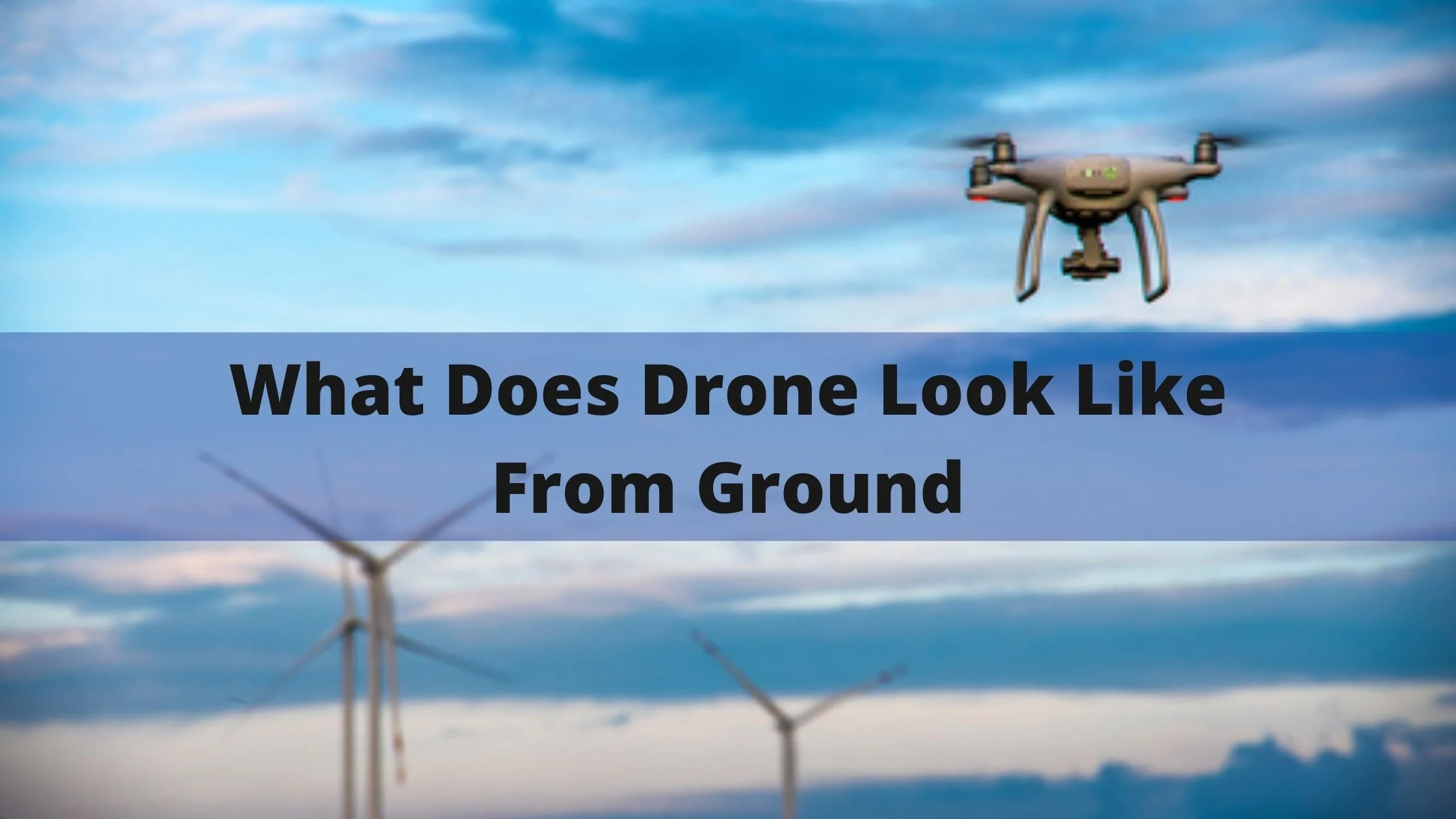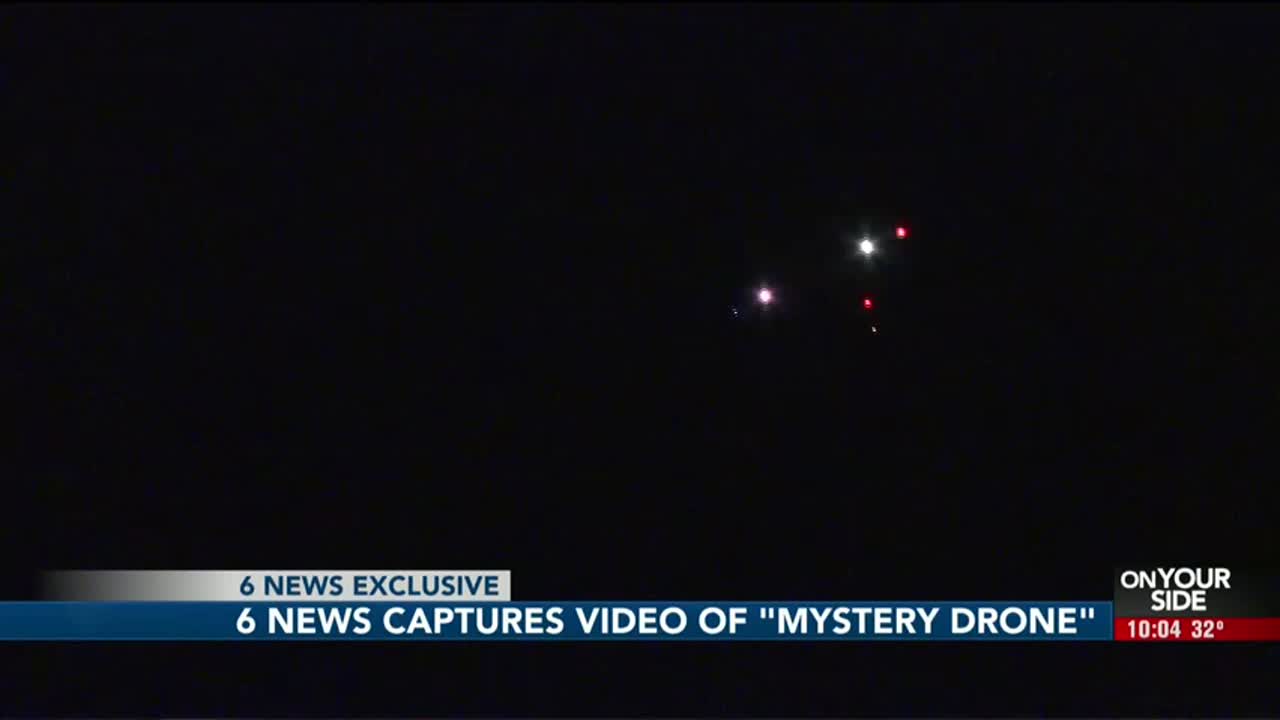
Imagine gazing up at the sky, and a sleek, modern marvel hovers above you – a drone. But have you ever wondered, "What does a drone look like from the ground?" Prepare to be captivated by the view, as we take you on a visual journey that unveils the world of drones like never before. From the intricate design details to the graceful dance in the sky, we'll show you the magic of these aerial wonders and the awe-inspiring sight they create when they meet the Earth's surface.
Peek behind the scenes of drone technology, and you'll find an intriguing blend of science and artistry. As we delve into the world of aerial photography and surveillance, you'll gain a newfound appreciation for the role drones play in our lives. Whether you're a drone enthusiast or simply curious about these modern marvels, join us in unraveling the captivating question of "What does a drone look like from the ground?" It's a journey that will leave you with a deeper understanding of the skies above and the wonders they hold.
Can You See A Drone From The Ground?
Yes, you can see a drone from the ground, but it depends on a number of factors, including:
- The size of the drone- Larger drones are more visible than smaller drones.
- The altitude at which the drone is flying: The higher the drone is flying, the less visible it will be.
- The color and camouflage of the drone - Drones that are painted to blend in with their surroundings will be less visible.
- The time of day and weather conditions - Drones are more visible in daylight and in clear weather.
In general, you can see a drone from the ground if it is flying within a few hundred feet of you. However, drones can fly much higher, and at high altitudes they can be difficult to spot with the naked eye.
Here are some tips for spotting drones from the ground:
- Look for small, moving objects in the sky.
- Pay attention to the sound of drone motors. Drones make a distinctive whirring sound.
- Look for blinking lights. Drones have navigation lights that blink at night.
- Use binoculars or a telescope to get a better view.
If you are concerned about privacy, you can also use a drone detector. Drone detectors can detect the radio signals that drones emit, even if the drone is not visible to the naked eye.
What Does A Drone Look Like At Night?
You may be wondering what a drone looks like in the dark. During the night, a drone can be easily identified by its lights. Drones generate non-blinking LEDs in addition to the ones that occasionally blink.
Drone lights come in a variety of hues, but the most common ones are red, green, and white. When flying at night, most drones release lights. These lights can occasionally be so weak that, if you are not keeping a close eye out for them, you can miss them.
At night, a drone will typically appear as a small, moving light or lights in the sky. The lights on a drone are usually used for navigation and can be white, red, or green in color. Depending on the size of the drone, the lights may be quite bright, or they may be relatively dim. Some drones also have flashing strobe lights to increase visibility.
Here are some additional details about the lights on drones:
- Navigation lights -Navigation lights are used to help the pilot orient the drone and to see where it is going. These lights are typically white, red, and green in color. The white light is usually located on the front of the drone, the red light is usually located on the right side of the drone, and the green light is usually located on the left side of the drone.
- Anti-collision lights -Anti-collision lights are used to make the drone more visible to other aircraft and to people on the ground. These lights are typically bright and flashing.
- Strobe lights -Strobe lights are also used to make the drone more visible. Strobe lights flash rapidly, and they can be seen from a distance.
Some drone pilots may also install custom LED light kits or strobe lights on their drones for specific purposes, such as night flying or racing drones.
What Color Lights Do Drones Have At Night?
In addition to the occasional blinking LED, drones also produce non-blinking LEDs. Although there are many other colors of drone lights, red, green, and white are the most popular ones. Most drones emit lights when they fly at night. Sometimes these lights can be so dim that you miss them if you are not looking closely for them.
The most common colors of lights that drones have at night are white, red, and green. These lights are used for navigation, anti-collision, and visibility purposes.
Some drones may also have other colored lights, such as blue, yellow, or purple. These lights are often used for decorative purposes, or for specific applications such as aerial photography and videography.
Here is a more detailed description of each color of light that a drone may have at night:
- White light -White light is the most common color of light on drones. It is used for navigation and visibility purposes. White lights are typically located on the front of the drone.
- Red light - Red light is also a common color of light on drones. It is used for navigation and anti-collision purposes. Red lights are typically located on the right side of the drone.
- Green light -Green light is also a common color of light on drones. It is used for navigation and anti-collision purposes. Green lights are typically located on the left side of the drone.
- Blue light -Blue light is sometimes used on drones for decorative purposes, or for specific applications such as aerial photography and videography. Blue lights may be located anywhere on the drone.
- Yellow light - Yellow light is sometimes used on drones for decorative purposes, or for specific applications such as search and rescue operations. Yellow lights may be located anywhere on the drone.
- Purple light - Purple light is sometimes used on drones for decorative purposes. Purple lights may be located anywhere on the drone.
Do Drones Look Like Stars At Night?
Some drones may produce a visible light that blinks and is visible for several kilometers. The light may be white, green, or red in hue. It's very simple to confuse them for stars. You are unlikely to confuse the drone for stars, though, if it is flying close to where you are.
Yes, drones can look like stars at night, especially if they are flying at a high altitude and are not well-lit. However, there are a few key differences between drones and stars that can help you to distinguish between the two:
- Movement -Stars are typically stationary, but drones will move across the sky.
- Brightness -Drones are typically brighter than stars, especially if they have bright navigation lights.
- Flickering - Stars twinkle, but drones do not.
- Noise - Drones make a whirring sound, while stars are silent.
If you see a small, bright light in the sky at night that is moving and not flickering, it is likely a drone.
Here are some tips for distinguishing between drones and stars at night:
- If you see a light that is moving, it is likely a drone.
- If you see a light that is very bright, especially if it has multiple lights, it is likely a drone.
- If you see a light that is flickering, it is a star.
- If you hear a whirring sound, it is a drone.
If you are still unsure whether what you are seeing is a drone or a star, you can use binoculars or a telescope to get a closer look.
How Far Can A Drone Camera See At Night?
These drones are often very expensive and are mostly utilized by police enforcement. As a result, you have less cause to be concerned that a neighbor of yours is spying on you with one of these drones.
Better technology allows surveillance drones to view farther at night than this. These drones are equipped with night vision cameras and infrared sensors, and their lenses and zoom capabilities are far superior.
Typically, a drone operating at night can detect your presence up to 160 feet (50 meters) away. The drone will only capture a blurry image of you at greater distances.
The distance that a drone camera can see at night depends on a number of factors, including:
- The type of camera -Some drone cameras are better at night vision than others.
- The amount of light available - Drone cameras can see better in low-light conditions than in complete darkness.
- The altitude of the drone -Drone cameras can see further at higher altitudes.
- The weather conditions -Drone cameras can see better in clear weather than in cloudy weather.
Some drone cameras are equipped with infrared night vision sensors. Infrared night vision sensors can detect heat signatures, which allows the camera to see in complete darkness. However, infrared night vision sensors have a shorter range than regular cameras. A drone camera with infrared night vision sensors can typically see up to about 5 yards away.
Here are some tips for increasing the range of a drone camera at night:
- Use a drone camera with a high-quality lens.
- Fly the drone at a lower altitude.
- Use a spotlight or other light source to illuminate the area that you want to see.
- Fly the drone in clear weather.
See also: Can drone work in space?
FAQ's About What Does A Drone Look Like From The Ground?
How Do You Detect A Drone?
- Detecting a drone in the sky involves using various methods and technologies, such as visual observation, RF analysis, radars, acoustic sensors, and thermal detectors. ...
- The drone sounds, often a distinctive buzzing or humming, make it easier to detect their presence.
Can Drones See In The Dark?
A typical drone with powerful illumination can see up to 165 feet (50m) away at night or in low-light conditions. Beyond that distance, the drone can only see a faint shadow that cannot be discerned. Drones equipped with infrared night vision cameras can also see a fairly limited range, up to about 5 yards.
Are Drones Easy To Detect?
Unlike the manned aircraft that most radars are designed to detect, drones are controlled remotely. This means they can fly evasively or erratically at varying speeds, even in harsh weather like fog or storms, making them much harder to detect.
How Do Drones Sound?
Drones produce a high-pitched buzzing or humming noise, akin to a swarm of bees or a distant lawnmower. This is the sound of the propellers spinning at high speed to generate lift. Drones can produce noise levels between 70 to 80 decibels, which is comparable to a vacuum cleaner or a busy road.
Conclusion
In closing, our exploration into the world of drones and their appearance from the ground has shed light on the fascinating intersection of technology, art, and human curiosity. We've witnessed how these unmanned aerial vehicles have not only revolutionized industries but also become a source of wonder and inspiration for people worldwide.
As we wrap up our journey, it's evident that the view of a drone from the ground is more than just a visual delight – it's a testament to our relentless pursuit of innovation and exploration. Whether you see them as tools of progress, artistic expressions, or marvels of engineering, drones have become an integral part of our modern world.

